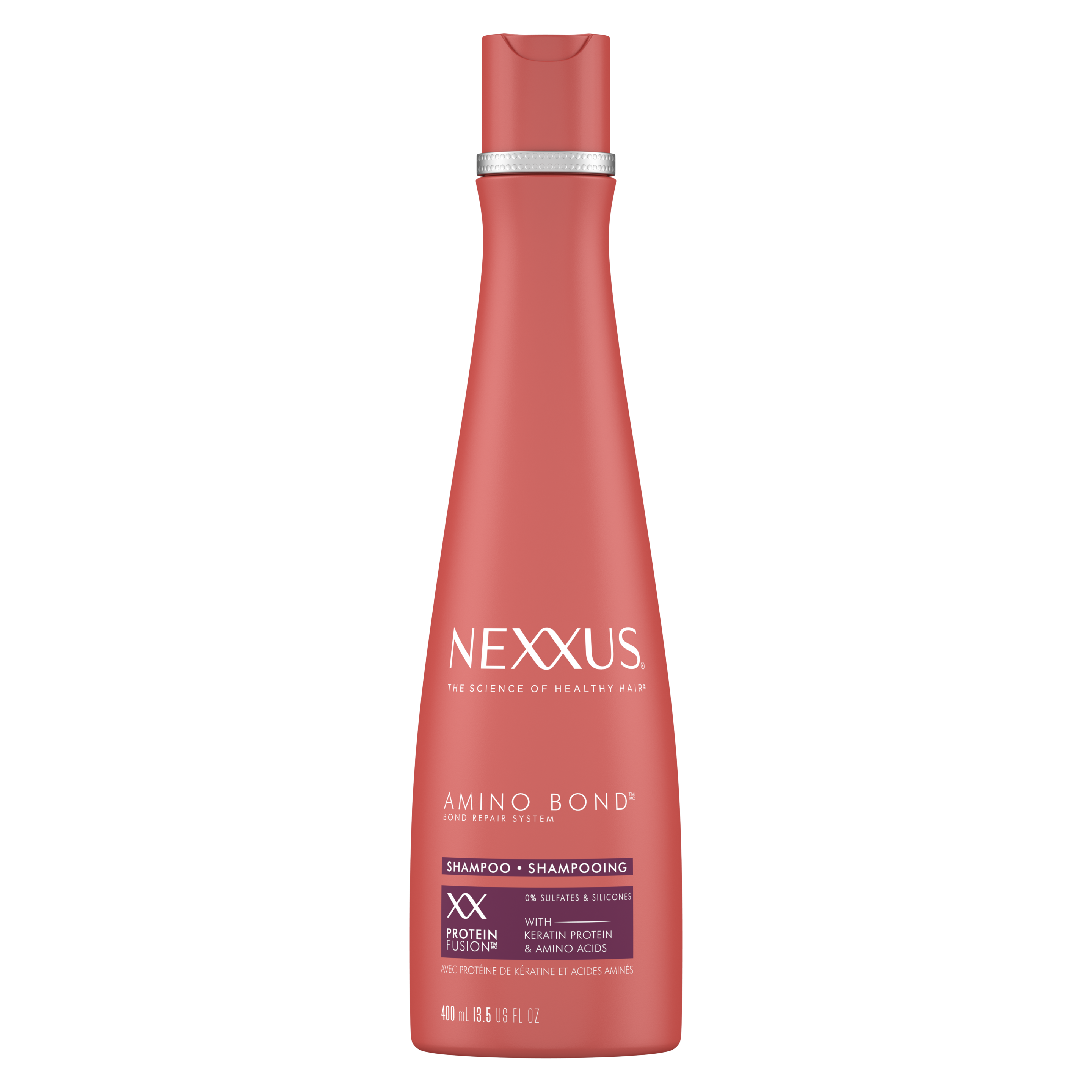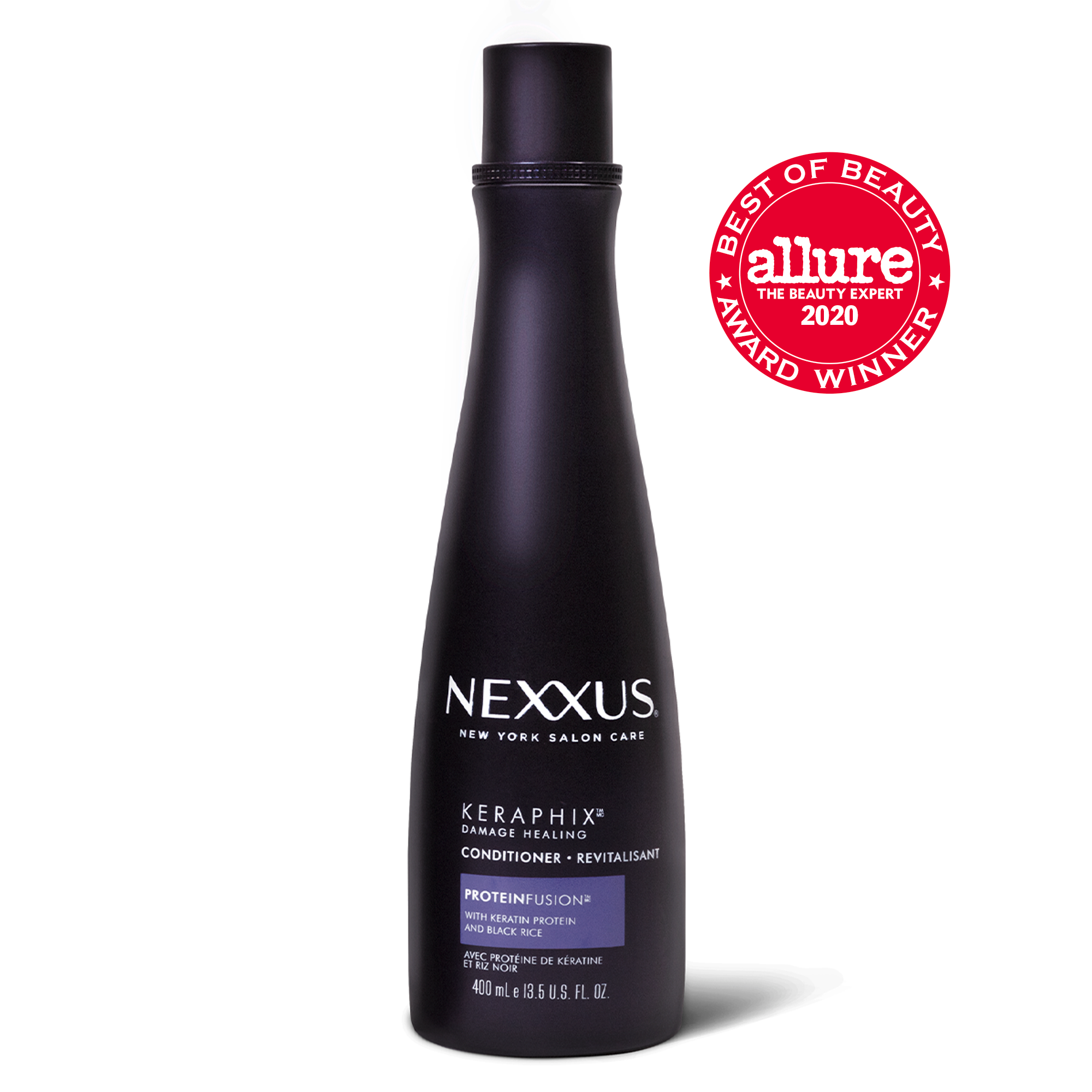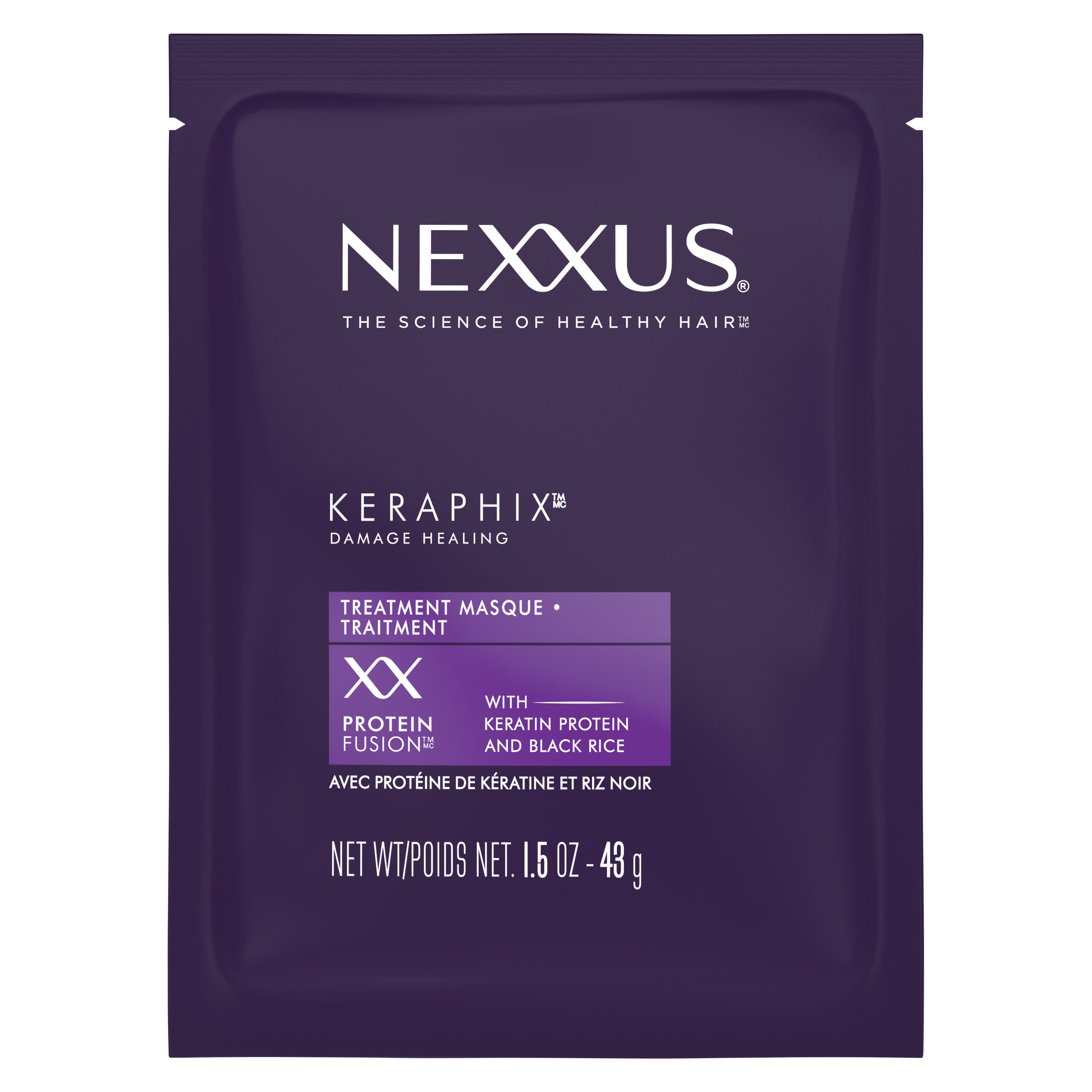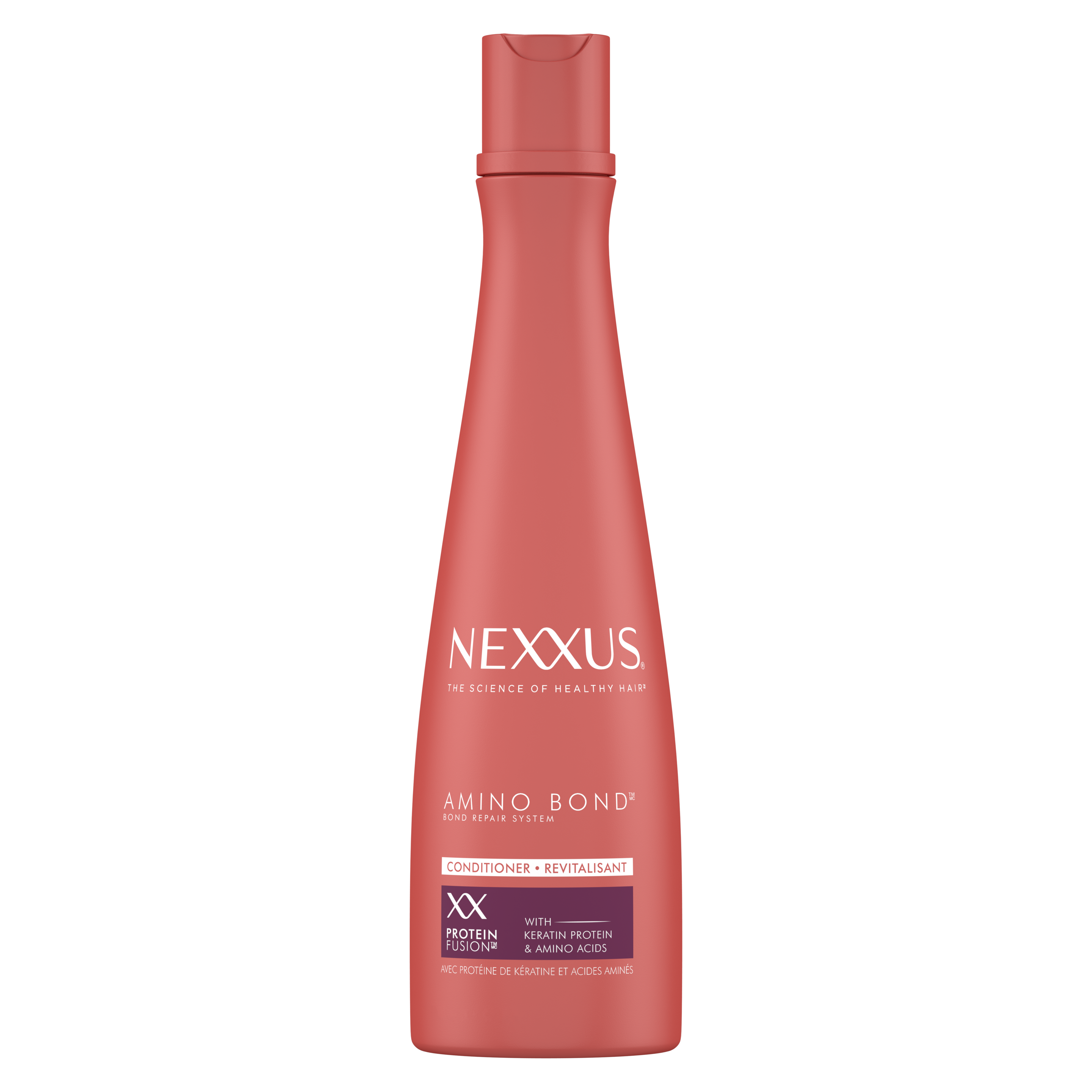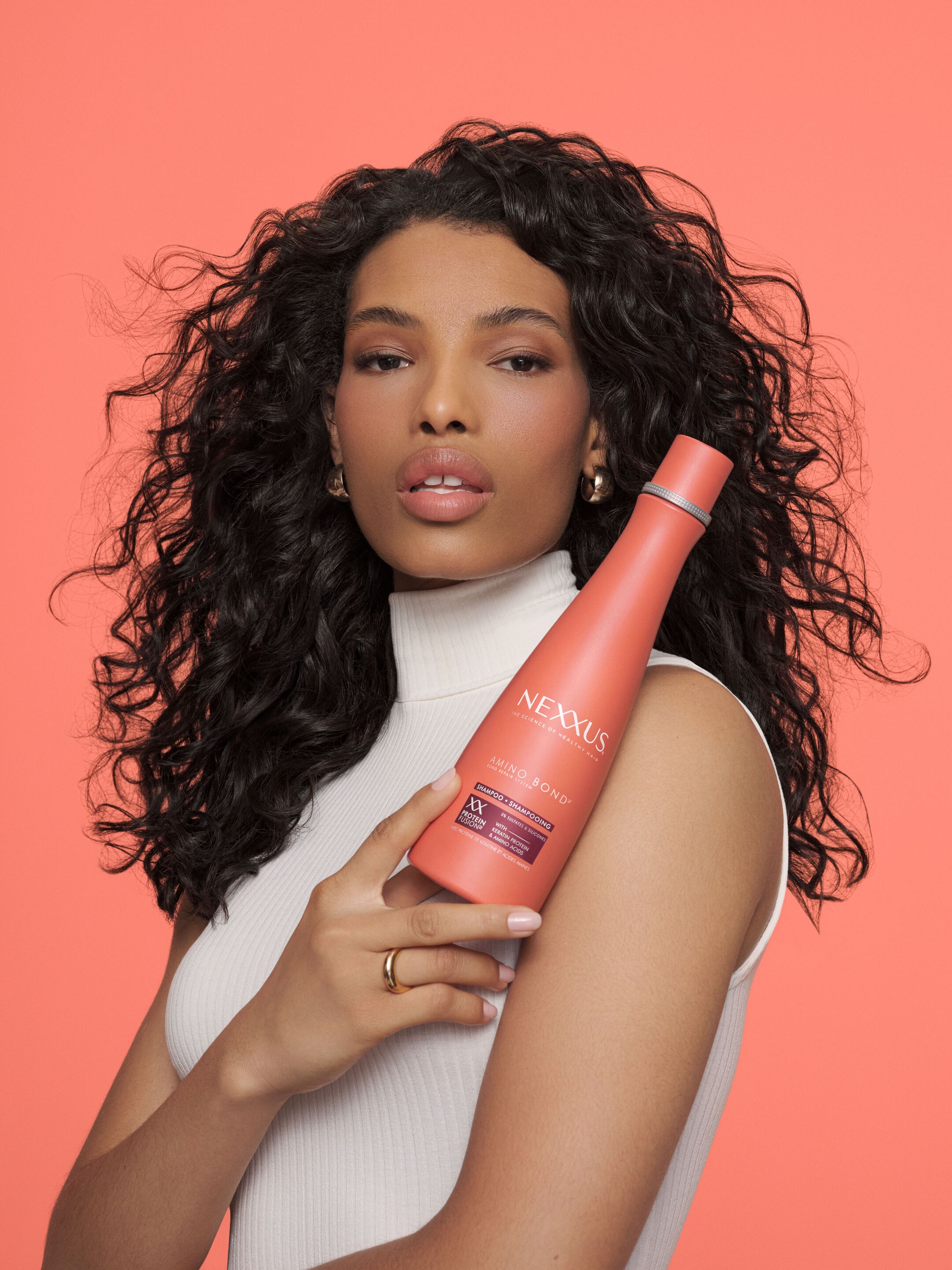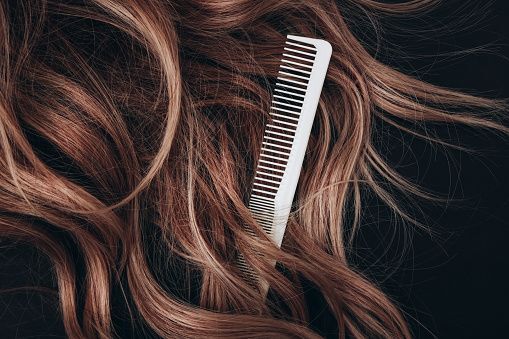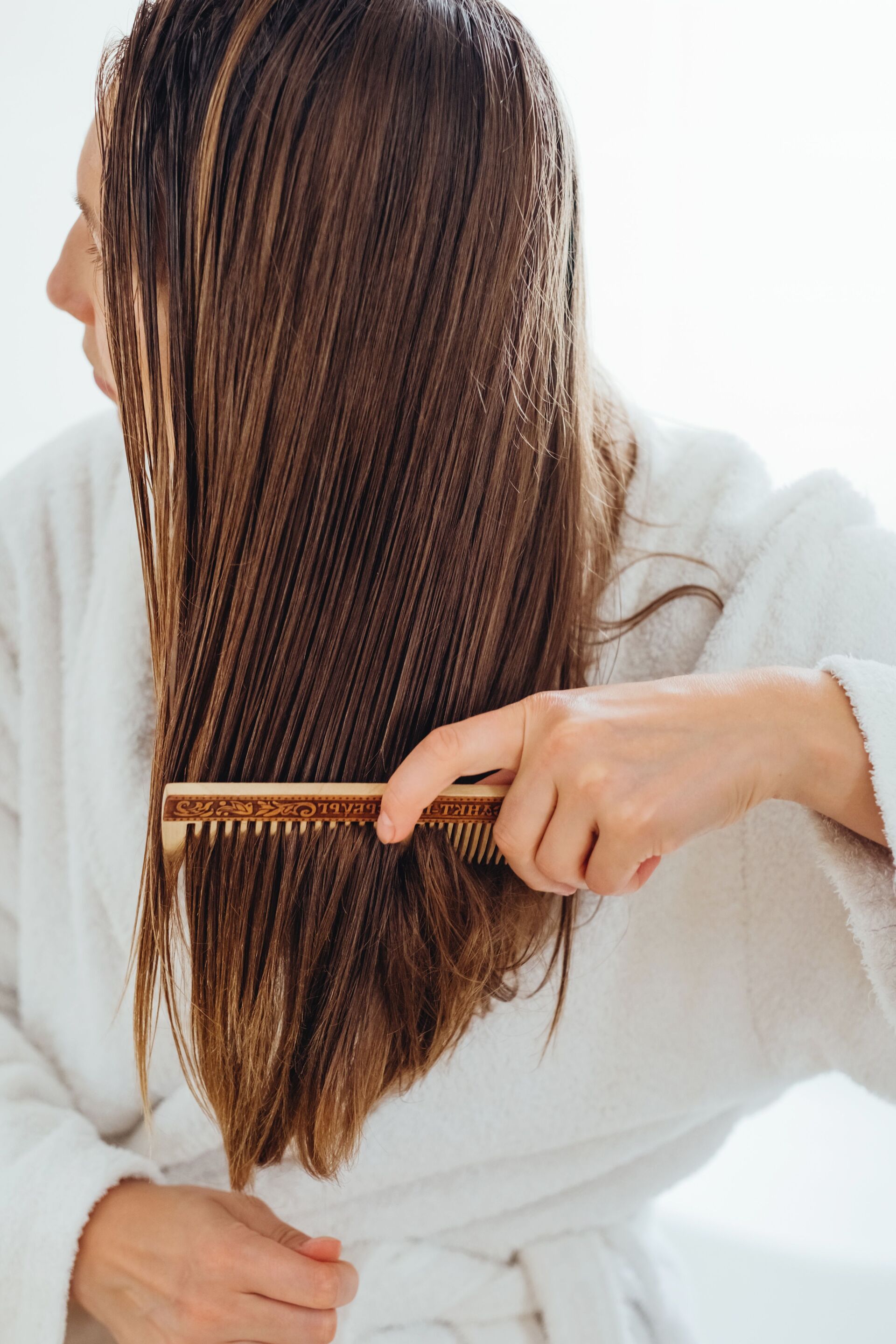There’s a reason why we care so much about hair protein at Nexxus: hair is made up predominantly of protein, so when products are powered by protein, they naturally replenish, repair and strengthen. Protein is key to healthy hair
Hair proteins can be damaged or lost thanks to a host of external aggressors, many of which are impossible to avoid, like brushing, blow drying and being out in the sun. But when haircare includes protein, it fixes damage, rather than simply masking it. Here we look at different hair proteins and the role they each play in caring for your hair.
Explained: Keratin protein for hair
Keratin is the fibrous protein that accounts for 90% of every hair strand. It’s also present in your skin and nails. Spot keratin in a product ingredient list and you can be confident it will boost your hair’s strength, while healing and repairing its natural structure. How does it do this?
Keratin supports the cuticle
Hair damage often starts at the cuticle, which is the protective lipid layer that shields the protein-packed inner core; think of fish scales, and you’ll get a good idea of how the overlapping cells of the hair’s cuticle look. When the cuticle is harmed, these cells become raised and cracked, creating weak spots that leave the inner layers vulnerable. Keratin-infused products, such as Nexxus Keraphix Keratin Protein Shampoo, Conditioner and Mask for Damaged Hair. With an exclusive PROTEINFUSION blend of keratin protein and black rice, they seek out areas of weakness and plug gaps in the cuticle to align the raised cells, protecting the proteins within and locking in moisture.
Keratin combats frizz
Damaged hair is more porous, as those raised cuticle cells are unable to keep out moisture. What’s the result when hair takes on too much moisture? Frizz. But because keratin-infused products seal the cuticle to trap moisture in and keep humidity out, they also prevent frizz.
Keratin seals splits
While split ends can’t be reversed – only a trim can truly eliminate them – keratin does seal and smooth split strands together, ensuring breaks don’t advance further up the hair shaft.
Explained: amino acids for hair
You can’t have keratin without amino acids: there are 23 types of amino acids that bond together to create keratin protein. Amino acids are the molecules responsible for your hair’s characteristics – its strength, shape, flexibility – and are lost when hair is damaged. Add amino acid haircare, such as the Nexxus Amino Bond Shampoo, Conditioner, and Intense Rebond Treatment to your regime, and they’ll get to work repairing hair at an even deeper level, from within. Here’s how:
Amino acids build bonds
When hair is visibly damaged, you can bet it’s suffering from broken hair bonds (read more about the science in Bond building hair care 101: everything you need to know). Amino acids get to work fixing these tiny yet essential parts of your hair structure, rebuilding broken bonds and generating new ones.
Amino acids boost strength
When hair bonds are repaired – thanks to those amino acids – strands are left stronger and better able to fight future damage.
Amino acids improve elasticity
When hair is damaged it lacks elasticity, or the ability to stretch and rebound. This can lead to brittle hair that becomes even more prone to damage. Fix those broken bonds, and elasticity returns.
The power of combining keratin and amino acids
By combining amino acids and keratin, you get something special: damage on both the surface and deepest levels is repaired, and hair is fortified against future harm. Each product within the Nexxus Amino Bond collection combines five amino acids, keratin protein and lipids in a patent-pending blend of bond-building technology. The result? A shampoo, conditioner and post-shower leave-in mask that fix every type of hair damage, in minutes.
Avoid over-washing
An important lesson when learning how to treat a greasy scalp is to never over-wash your hair. It might be tempting to scrub it clean every day to avoid that slick, oily look, but this is only going to make it worse! In fact, the more frequently you clean your hair, the more oil it’s going to produce.
Try adding an extra day in between hair washes. Opt for an up-do to hide greasy strands or invest in a quality dry shampoo to freshen up on your no-wash days.
Oil scalp, dry ends? Try home remedies
A great home remedy for a dry, oily scalp is apple cider vinegar. While you might be using this for cooking and probably haven’t thought about soaking your hair in it before, trust us when we say, it works wonders! Apple cider vinegar can restore the pH balance of your scalp, remove product and oil build-up, and leave your hair soft and shiny without the oil. Here’s how to do a rinse at home:
1. Add up to 3 tablespoons of apple cider vinegar to a jug of water.
2. Pour the mixture over your hair after shampooing and massage into your scalp.
3. Leave to sit for a few minutes before rinsing out.
Apple cider vinegar is a great way to maintain scalp health, which you can find out more about in our article on How to Take Care of Your Scalp.
A greasy scalp is no laughing matter. But with these solutions, you should be able to reduce some of the oils your head seems to insist on producing to get fuller, thicker, and cleaner locks. If you suffer from a dry but oily scalp, make sure to take a look at our article How to Treat Dry Scalp for more helpful tips.
xx, Nexxus
Featured Products
Related Articles
- slide 1
- slide 2
- slide 3
- slide 4

